For a full mathematical definition of ‘orbifold’ summarized above, check A. Adem and M. Klaus. String-theory compactifications on N-dimensional orbifolds is attractive, and essential in some cases. For N = 6, it allows the full determination of the emergent four-dimensional effective supergravity theory, including the gauge group and matter content, the superpotential and Kähler potential, as well as the gauge kinetic function, and yields the four-dimensional space-time supersymmetry-RT.
Before proceeding, what is in an equation like …

Eq. 1
where integration on a global quotient ![]() is defined by
is defined by
![]()
and ![]() is a G-invariant differential form, where
is a G-invariant differential form, where ![]() is the inertia stack of
is the inertia stack of ![]() , an orbifold groupoid, yeilding the Poincaré pairing on
, an orbifold groupoid, yeilding the Poincaré pairing on ![]() defined as the direct sum of the pairings
defined as the direct sum of the pairings

Eq. 2
with
![]()
Let us go one small mathematical step at a time, and here is a nice visualization of an orbifold

Take two D-branes, with their world-volumes and velocities ![]() ,
, ![]() with transverse positions
with transverse positions ![]() ,
, ![]() . Generally, the potential between D-branes is given by cylinder vacuum amplitudes and can be interpreted as the Casimir energy stemming from open string vacuum fluctuations. The closed string amplitude
. Generally, the potential between D-branes is given by cylinder vacuum amplitudes and can be interpreted as the Casimir energy stemming from open string vacuum fluctuations. The closed string amplitude

Eq. 3
is a tree level propagation between two boundary states with two sectors, RR and NSNS, corresponding to periodicity and anti-periodicity of the fermionic fields around the cylinder. Statically, we have Neumann b.c. in time and Dirichlet b.c. in space, and the dynamics of the boundary state is given by boosting the static one with a negative rapidity ![]()
![]()
In the large distance limit ![]() only world-sheets with
only world-sheets with ![]() will contribute. Hence, the moving boundary states, Eq. 4 and 5:
will contribute. Hence, the moving boundary states, Eq. 4 and 5:
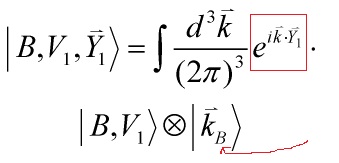
Eq. 4
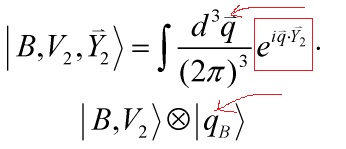
Eq. 5
can only carry space-time momentum in the combinations
![]()
and
![]()
If one integrates over the bosonic zero modes and factors-in momentum conservation
![]()
then the amplitude factorizes into a bosonic and a fermionic partition functions
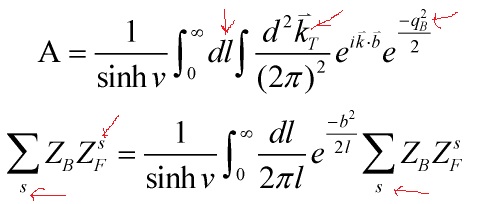
Eq. 6
where
![]()
and ![]() , and the commutation relations are
, and the commutation relations are
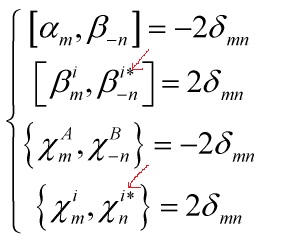
CRs
For the RR zero modes satisfying a Clifford algebraic structure and thus are proportional to ![]() -matrices
-matrices
![]()
the creation annihilation operators are given by
![]()
thus satisfying the algebra: ![]()
Hence, for an orbifold rotation ![]() , we have
, we have
![]()
![]()
and
![]()
and for a boost of rapidity ![]() , we have
, we have
![]()
![]()
and
![]()
finally getting us
![]()
- An orbifold compactification can be obtained by identifying points in the compact part of spacetime which are connected by discrete rotations
![]()
on some of the compact pairs ![]() and to preserve at least one supersymmetry, one imposes
and to preserve at least one supersymmetry, one imposes ![]() .
.
Since 3-branes, in a double-geometric e-folding sense, figure essentially in my last few posts on the Randall-Sandrum/Klebanov-Strassler relation/correspondence, let me consider such a 3-brane configuration: in the static case, I shall take Neumann b.c. for time, Dirichlet b.c. for space and mixed b.c. for each pair of compact directions.
We get new b.c. for the compact directions
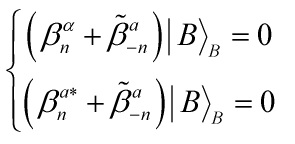
Eq. 8
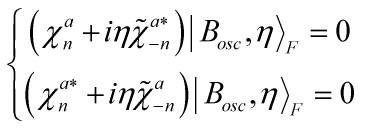
Eq. 9
and
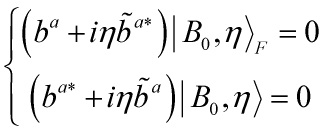
Eq. 10
Let us also define a new spinor vacuum
![]()
such that
![]()
is the compact part of the boundary state. Notice though that
the boundary state is not invariant under orbifold rotations, under which the modes of the fields transform as in eq. (3)

Eq. 3
as well as the new spinor vacuum as
![]()
However, this was to be expected since a ![]() rotation mixes two directions with different b.c, and hence the corresponding closed string state does not need to be invariant under
rotation mixes two directions with different b.c, and hence the corresponding closed string state does not need to be invariant under ![]() rotations. So we get for the compact part of the twisted boundary state
rotations. So we get for the compact part of the twisted boundary state
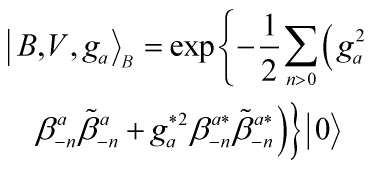
Eq. 11
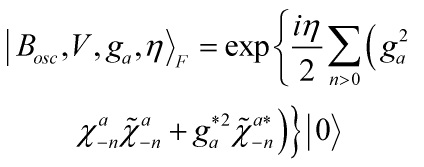
Eq. 12
and

Eq. 13
and after the GSO projection, the total partition functions for any relative angle ![]() are
are
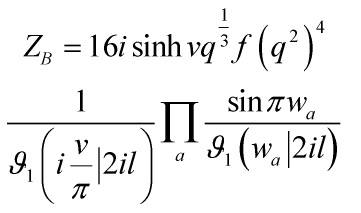
Prd. 14
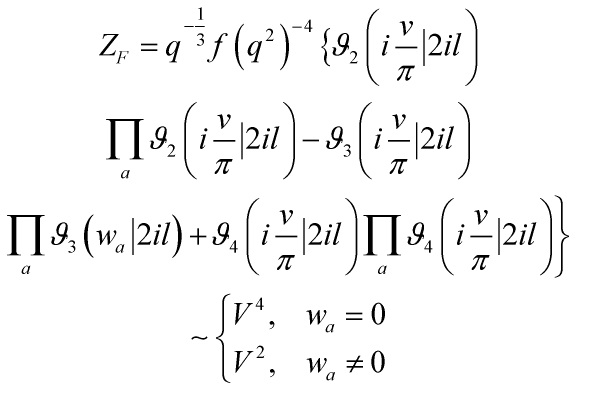
Rel. 15
and to get the invariant amplitude, one averages over all possible angles ![]() and orbifoidal-products with respect to Eq.s 1 and 2 at the beginning of this post: the mathematical beauty and the beast have became one – which at the large distance limit
and orbifoidal-products with respect to Eq.s 1 and 2 at the beginning of this post: the mathematical beauty and the beast have became one – which at the large distance limit ![]() , for 3-branes, but is generalizable, yields us our desired results
, for 3-branes, but is generalizable, yields us our desired results
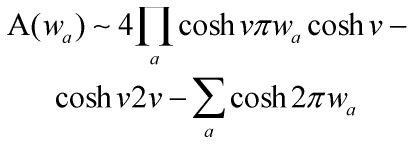
‘Eq’/~ 16

‘Eq’/~ 17
By local monodromy along the orbibold boundary circle, one gets
![]()
Thus all the D-brane configurations I have considered correspond to extremal 0-brane solutions of the low energy 4-dimensional supergravity, and the 3-brane configuration, by Eq. 1

Eq. 1
applied to the corresponding 4-D world-volume’s Kappa-terms substituted-in, gives us the Randall-Sundrum  -compactification desired, visually …
-compactification desired, visually …
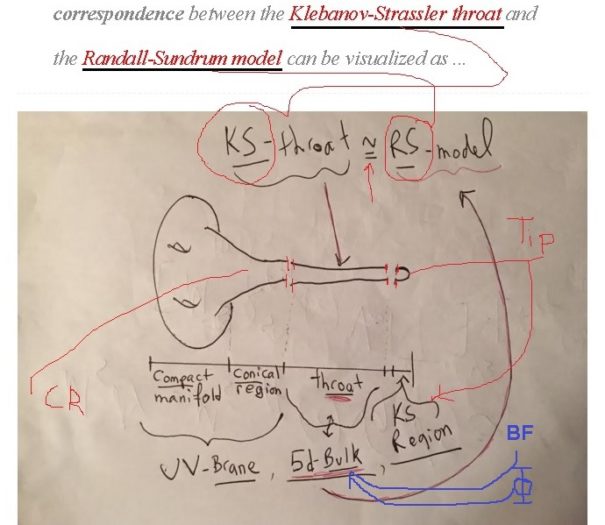
Clearly, I must cash-in on my generalization-claim above and

